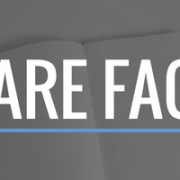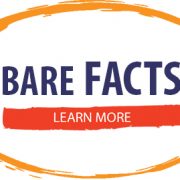A Report From the Recovery: Credit Trends to Watch in 2021
‘If you work in or are connected to the credit industry—whether as a lender, a retailer, or even a B-to-B manufacturer that offers financing to encourage sales—it’s a good time to survey the credit landscape.’ BARE shares an article by Susan Doktor and Jason Steele for Money.com on what credit card issuers need to know.
The worst may be behind us, for marketers of every stripe, the COVID19 economic crisis is still unfolding. Americans were shaken to their very core as they witnessed a multi-level assault on their safety. Countless consumers and business owners changed their spending and other financial behaviors. And while data demonstrates that we are slowly returning to some pre-pandemic norms, subtle—and even blatant—shifts in our attitudes are likely to linger. To put it succinctly, we’ll never forget COVID19.
If you work in or are connected to the credit industry—whether as a lender, a retailer, or even a B-to-B manufacturer that offers financing to encourage sales—it’s a good time to survey the credit landscape. How did customers’ feelings about borrowing money change? What behavioral shifts can we expect as a result? Are you in a position to meet emerging customer needs or must your business evolve to serve them? Let’s take a look at what customers want from their credit relationships right now and make sure you’re hearing their voice loud and clear.
Message Number One: Earn My Business
This isn’t new news. But competition for borrower business is fierce. Most consumers have three to five credit cards in their wallets right now. The internet has empowered them to learn about their borrowing options in record time. And where there is choice, there is risk to your business.
For banks, the risk may be greater than for other lenders. According to Morning Consult, banks should expect a 20% attrition rate this year. Millennials are more likely than average to switch banks in the next year with 37% of them self-reporting their intention to do change. High earners (over $100,000 annual income) also outpace other demographics for intent, with 30% saying they will look elsewhere for banking services. Does your company track attrition and collect demographic data on lost customers? If not, it may behoove you to add these metrics to your customer analysis toolbox.
Message Number Two: There’s Room for Improvement
A recent survey of credit card holders by US News and World Report revealed some good news. More than 80% of credit cardholders reported being satisfied or very satisfied with their primary credit cards. Presently, there are more than 459 million credit cards in use today—certainly another indication of their popularity.
But respondents clearly feel their cards aren’t perfect. In the US News and World Report survey, high APRs were identified by 16% of credit card users as one detractor and 11% of customers survey complained about annual fees. A study by Experian pointed to an even higher dissatisfaction rate with high APRs—51%. Companies make money by charging interest, of course, and most lenders are unlikely to bend to customer demands in those areas. But some popular features of credit cards aren’t so costly. Borrowers appreciate mobile access to their accounts. They give points to cards that protect their privacy and include fraud protection in their card agreements. Credit reporting, a service that’s included with a growing number of cards, is another driver of customer satisfaction. The conclusion: constantly honing your mobile and online customer experience will keep customers coming back, as will offering ancillary financial services that customers may otherwise have to pay for separately.
Message Number Three: 2020 Changed Everything
Let’s call it the COVID effect. While consumers relied more heavily on credit cards during the economic downturn just to get by, they weren’t happy they had to do so. And they hope not to do it again. The global pandemic profoundly changed how consumers think about their finances generally. People who might have previously relied on a credit card to see them through an emergency are more likely to save and create a crisis fund of their own. More consumers are considering buying previously-owned appliances and other high-ticket items rather than financing brand new. In addition to cutting back on spending generally in 2020, people who never created or stuck to a budget before COVID19 have jumped on the budget bandwagon. All of these attitudinal shifts will influence how consumers use credit in the future. Creditors will have to find new ways to make financing purchases more attractive. Cashback or other rewards? Complimentary services? Lower late fees? How will your business respond?
Message Number Four: You Can Attract New Customers Through Education and Transparency
With so many customers considering swapping their old cards for new ones, there’s an opportunity for savvy credit marketers to get a leg up on the competition. Consumers lament that shopping for a new credit card is overwhelming. Even the best credit card reward structures can be confounding—many are positively Byzantine, with time limit, purchase categories, and other details varying from card to card. Annual fees, minimum purchase requirements, introductory APR rates and subsequent rate hikes, and other credit card provisions can set consumers up for costly surprises. Creditors will earn points—and customer loyalty—for being up proactively transparent, rather than burying fees and restrictions in the fine print.
Creditors also have an opportunity to build stronger relationships with customers by providing online financial education resources. It hardly matters on what topic. Credit card customers want to learn about saving for retirement, paying off student loan debt, and credit repair tactics they can easily employ. Provide a link so they can download a free copy of their credit reports. Consumers are hungry for financial literacy in manageable, bite-size pieces. Creditors will benefit by publishing a comprehensive, up-to-the-minute blog that customers can refer to again and again. Avoid populating it with self-serving, overly promotional articles. Customers want information and service. They can do without more marketing messages in their lives.
Message Number Five: Don’t Mess with My Credit Score
Most credit card users are aware that hard credit inquiries have a negative impact on their credit scores. They’re wary about comparison shopping and taking unnecessary chances on being approved for a card as a result. More credit card companies should take a page out of the mortgage lenders’ book and offer a soft-inquiry online prequalification process that immediately lets customers know how likely they are to be approved for a card and at what interest rate.
Your Next Steps
Listening closely to the voice of your customer is always worthwhile. Successful salespeople have informal conversations every day to that end. But the sweeping changes engendered by COVID19—both economic and emotional—make formal pulse-checking more important than ever. Now is a crucial time to amplify what your customers are saying and thinking about your business. BARE International can help you design a primary research initiative to inform your sales and marketing strategy. Your options are plentiful, from full-blown segmentation studies that uncover generational, regional, and other demographic differences to simple online surveys and mystery shopping programs you can launch virtually immediately. Contact us today to discuss how customized research can make you more competitive in the post-pandemic market and beyond!
Read the original article in full here.
For more information on how we can help you set up a mystery shopping program, send us a note here. We, at BARE, believe in the ‘why’ behind the reasons, and we will provide actionable insights to help you provide the best experience for your customers.
Disclaimer of endorsement: Any reference obtained from this article to a specific business, product, process, or service does not constitute or imply an endorsement by BARE International of the business, product, process, or service, or its producer or provider.











